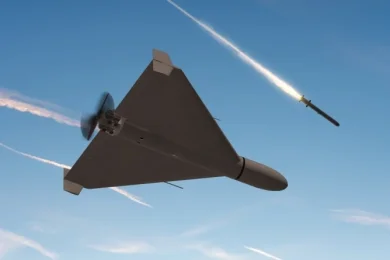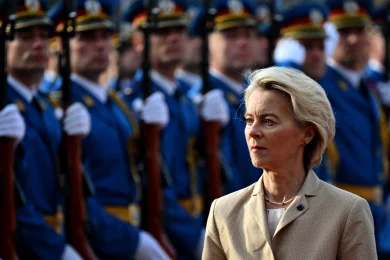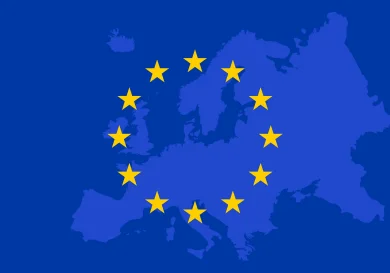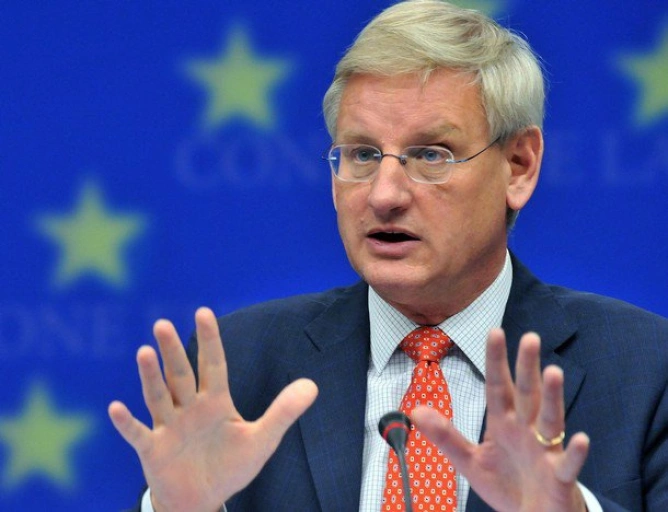
There has been much talk recently about the Drone Wall. Until we find out what it consists of, the fact that there has already been a lot of discussion about it tells us something: it is a classic example of strategic communication that has managed to package a multilayered, very complex technological concept into a phrase that evokes the familiar – a wall. First of all, what is the purpose of this wall? Like other walls, it is to prevent passage. In this case, the passage of drones coming from the east, whether attributed to the Russian Federation or not (the attribution is a subject in itself that we will analyze another time). The idea is simple: to build a technological ensemble that covers the entire Eastern Flank of the European Union, from Finland, through Poland, to Romania and Bulgaria. A system that allows for the early identification and neutralization of drones that have illegally entered the airspace of EU member states. The idea of such a defense system against drones came as a response to the proliferation of cheap models in the war in Ukraine and gained momentum after the incursions in 2025, which peaked in September 2025. Specifically, in 2025, the European Commission proposed an initiative initially called "Drone Wall" (hence the name Drone Wall), which has recently evolved into the European Drone Defence Initiative, part of the recently adopted roadmap for defense to strengthen European defense capabilities by 2030 (Defence Readiness Roadmap). Kaja Kallas, the EU High Representative for Foreign Affairs and Security Policy, stated in mid-October that the wall will be fully operational by 2027. On the ground, this wall will take the form of a pan-European anti-drone defense network, initially located on the eastern flank, but with plans to expand across the entire territory of the European Union. The wall will fit into a broader program for securing European borders, which will include Eastern Flank Watch for securing maritime, air, and land borders, as well as the European Air Shield, the counterpart of the Drone Wall for higher altitudes and speeds, in the case of missiles and fighter jets. The third level is the European Space Shield, intended for the protection of European space capabilities.
At its core, the system is designed in four technological layers:
The early detection layer, consisting of radar networks (including passive ones), acoustic, thermal, and optical sensors, capable of identifying small objects with a reduced radar signature. These transmit data in real-time to regional command centers.
The classification and analysis layer, based on artificial intelligence and flight pattern recognition algorithms.
The countermeasures layer, which includes electromagnetic jamming systems, GPS and radio control signal inhibition, as well as dedicated interceptors (such as anti-drone drones, guided munitions, or nets).
The coordination and communication layer, which ensures interoperability between member states and integration with NATO infrastructure, especially within the integrated air and missile defense system (NATINAMDS), practically the aggregator of command and control software of NATO member states.
Geopolitically, it is a signal. Since the first von der Leyen Commission in 2019, the European Union has expressed its ambition to become a global security actor. The legal basis for this ambition has existed for some time: Article 42(7) of the Treaty on European Union enshrines the mutual defense clause, while Article 222 of the Treaty on the Functioning of the European Union establishes the solidarity clause. However, unlike Article 5 of the North Atlantic Treaty, which commits to an automatic collective military response, the European clause remains one of voluntary cooperation among member states. In practice, the security of the continent has continued to be managed through NATO, despite the almost perfect overlap between the two organizations, with only Austria and Cyprus not being members of the Alliance. Thus, the Drone Wall is both a technological ensemble meant to allow for the early identification and neutralization of drones, as well as a geopolitical signal meant to position the EU as a political entity with its own security footprint, pressured by a revisionist Russian Federation to the east and an America absorbed by its own problems to the west.
Let us not forget that the first European Union Security Strategy, published in 2003, began with the phrase "Europe has never been more prosperous, safer, and freer." The successor to this strategy, published in June 2016, stated that "the purpose, even the very existence of the Union, is called into question." Today, after 15 years of crises (euro, migration, COVID, war), existential threats have metamorphosed into daily challenges: countering drones.
The project raises, obviously, challenges – many of them familiar and which have undermined other large-scale European projects. The Drone Wall depends on the ability of member states to speak the same technological and operational language, in a field where differences in standards, budgets, and industrial pace remain deep. All are sensitive subjects that have never allowed the coagulation of a genuine European defense industry. In a field where means and ends often blur, the Drone Wall depends on – and will partially determine – the degree of success of European plans to achieve real autonomy in the field of defense.
https://2eu.brussels/articol/analize/zidul-dronelor-de-la-sintagma-la-realitate







